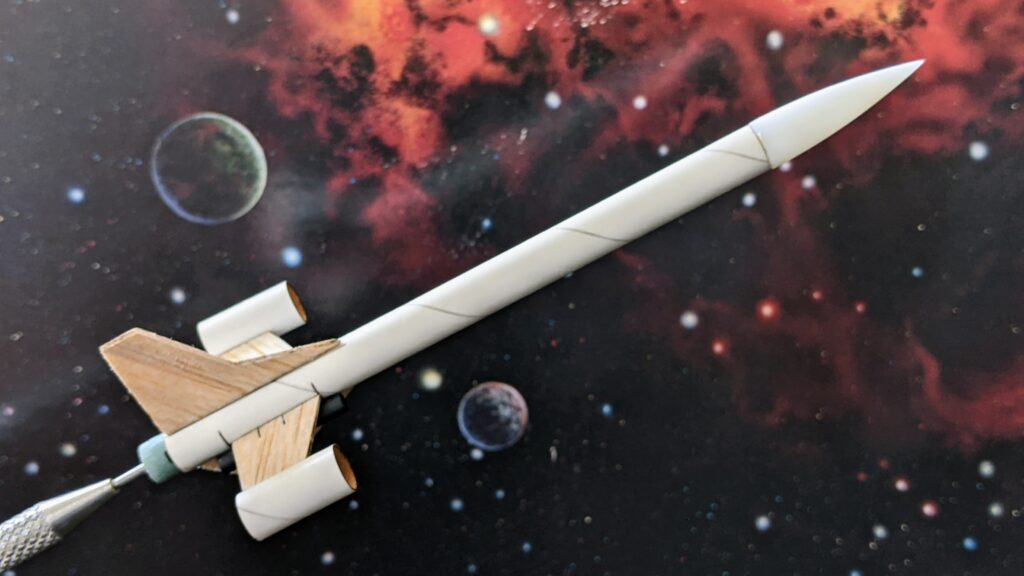Recently finished one of Balsa Machining Service’s 18mm School Rockets:
Category Archives: rockets
Estes Prowler
Finished this rocket in May but hadn’t flown it until Sunday for a variety of reasons. An Estes Prowler, an OOP kit very similar to the Majestic, a mid-power E2X kit.
I did some minor tweaks on this to improve the recovery line, add a rail guide in addition to the 3/16in lugs, etc.. It came with a nice looking pink body tube. Sadly one of the launch lugs slipped while setting and I didn’t notice. So I had to heat gun it off, sand paper the tube, etc etc, and wound up having to repaint the whole thing to deal with the blemish.
The big thing with the Majestic, and I assume this as well, is that you have to do something to keep the parachute, recovery line, etc. from falling lower in the rocket at ignition. It happens easily and the rocket becomes completely unstable. At the moment it’s one of my biggest criticisms of Estes kits: They’re selling the Majestic (and similar) as E2X kits for relative beginners, but they have a serious design flaw that’s actually kind of subtle to diagnose.
In any event, here’s a flight on a windy day on an E16-6, to an estimated 750–800ft, with the chute held to 200ft.
And video of takeoff from Brett’s action cam by the launchpad.
R10 Solar Warrior
After a tremendously long hiatus, I finished production and released my latest micro-rocket kit: The R10 MX Solar Warrior.
This is a 38% downscale of an Estes kit from the early to mid ’90s that I loved the look of but never actually owned.
A considerable part of the delay was simply settling on a paint scheme I really liked. Eventually it hit me that it should be a tribute to Ukraine and my Ukrainian friends & colleagues. There’s some literary connection there in that Ukraine is the world’s largest exporter of sunflowers and sunflower products. From there it took a while for inspiration to hit and the scheme you see here to develop. As a bonus, the R10 works well visually with the American-themed R5 MX Hawkeye.
Given the tiny size, the only realistic way to enable most people to replicate that fin pattern was to do a print sticker. That’s as opposed to a spray mask or layers of vinyl. That in turn meant though that I had to either significantly increase the precision of my kiss cutting or have people do so themselves. The latter would be reasonable for these shapes, sizes, and quantities, but I went for the first one. That in turn introduced more delay and demotivation as I had to swap out cutting equipment, develop new templates, establish new parameters, and so on toward overhauling the workflow. The end result was worth it though.





